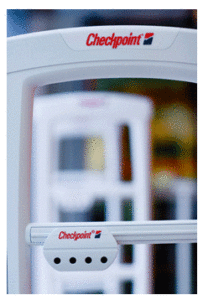 The laws in the United States concerning shoplifting undergo changes that in some instances put the strain on the retailers and their profit margins. The shoplifting law changes in 2014, in California, for example, let retailers in the state feel a sense of vulnerability and hopelessness. They expressed concerns about the fact that the laws allowed individuals to feel empowered to go into a store and shoplift without getting into too much trouble.
The laws in the United States concerning shoplifting undergo changes that in some instances put the strain on the retailers and their profit margins. The shoplifting law changes in 2014, in California, for example, let retailers in the state feel a sense of vulnerability and hopelessness. They expressed concerns about the fact that the laws allowed individuals to feel empowered to go into a store and shoplift without getting into too much trouble.
Those losses are not only detrimental to the profit margins of the store but can mean an increase in the number of shoplifters that can enter the store feeling embolden to steal. Such an increase comes with an increase in violence, and retailers are feeling the change. Proposition 47 passed in 2014 that reduce the penalties for many crimes, shoplifting included a law change that has left many retailers feeling vulnerable.
On the other hand, big retailers such as Wal-Mart, Bloomingdales, and Krogers are being sued for extorting customers. They accuse customers of shoplifting and then charging them money for the “courtesy” of not calling the police. The customers are bullied into paying for an online class by a company called Corrective Education Company and then the company pays Wal-Mart, Bloomingdales, and Krogers a cut of what they are charging these accused customers. The practice is insidious and wrong according to the legal company carrying the lawsuit, and customers and retailers have to be aware of this insidious and amoral practice.
Shoplifting is a crime, and retailers are arguably upset by the law changes that make it for them more difficult to do business. But, accusing customers that do not have the financial means to hire legal counsel is preying upon the poor and defenseless, and that is morally wrong.
Protecting a business from shoplifters is the responsibility of the owner and the management team, and no one understands the travail the loss prevention team goes through every day when the store opens its door for business. If, as a store owner, you are asking yourself what is a good solution for the prevention of shoplifting, we have to tell you, you have many.
But, one of the most effective solutions you have at your disposal for the prevention of shoplifting in your businesses is training your personnel and management team. Research has shown time and again that having trained personnel in your store or business decreases your losses thus increasing your profits.
 We supply and install the best anti-shoplifting equipment made. Checkpoint Systems is the gold standard of Electronic Article Surveillance (EAS) equipment. Support is off the chart. Checkpoint Systems has factory Tech’s everywhere, I mean EVERYWHERE. They have to since the majority of the top retailers in the world are using Checkpoint equipment. These Techs are not sub-contractors. They are skilled EAS, Radio Frequency (RF) experts. As an example, my Sr. Tech Dan is a former Navy Electronics Technician; he worked on highly advanced systems that protect our country.
We supply and install the best anti-shoplifting equipment made. Checkpoint Systems is the gold standard of Electronic Article Surveillance (EAS) equipment. Support is off the chart. Checkpoint Systems has factory Tech’s everywhere, I mean EVERYWHERE. They have to since the majority of the top retailers in the world are using Checkpoint equipment. These Techs are not sub-contractors. They are skilled EAS, Radio Frequency (RF) experts. As an example, my Sr. Tech Dan is a former Navy Electronics Technician; he worked on highly advanced systems that protect our country. Loss Prevention Managers and Associates use audits on a regular basis to keep track of merchandise that may be potentially high theft items. The items may be high dollar such as iPods, laptops, computer tablets and so on. The products being audited may simply be easy to steal and resell. Such items can include a variety of products ranging from drill bits to medicines, razor blades and even fragrances. Audits are an effective tool for Loss Prevention departments to quickly identify theft trends and to begin investigating when and how losses are taking place. For stores that cannot afford a Loss Prevention department, it falls upon store owners and managers to investigate missing merchandise. The question then becomes, how does a management team decide what items should be audited or when audits should take place?
Loss Prevention Managers and Associates use audits on a regular basis to keep track of merchandise that may be potentially high theft items. The items may be high dollar such as iPods, laptops, computer tablets and so on. The products being audited may simply be easy to steal and resell. Such items can include a variety of products ranging from drill bits to medicines, razor blades and even fragrances. Audits are an effective tool for Loss Prevention departments to quickly identify theft trends and to begin investigating when and how losses are taking place. For stores that cannot afford a Loss Prevention department, it falls upon store owners and managers to investigate missing merchandise. The question then becomes, how does a management team decide what items should be audited or when audits should take place?  Having to balance a customer friendly environment that makes patrons feel like you want their business and keeping a structure in place that ensures the store is profitable can be difficult. This is especially true when it comes to customer returns. At times, return policies even seem to put store management and loss prevention teams at odds with each other. On one hand, stores are afraid that a strict return policy will turn off regular customers and result in a loss of business. On the other hand Loss Prevention teams in their efforts to…well…prevent losses have a tendency to want to tighten procedures on everything. There is an argument to be made for both sides but there may also be a happy middle ground where both can come to an agreement.
Having to balance a customer friendly environment that makes patrons feel like you want their business and keeping a structure in place that ensures the store is profitable can be difficult. This is especially true when it comes to customer returns. At times, return policies even seem to put store management and loss prevention teams at odds with each other. On one hand, stores are afraid that a strict return policy will turn off regular customers and result in a loss of business. On the other hand Loss Prevention teams in their efforts to…well…prevent losses have a tendency to want to tighten procedures on everything. There is an argument to be made for both sides but there may also be a happy middle ground where both can come to an agreement. Inventory in a retail store can offer the management and the loss prevention team a clear picture of whether their efforts are working or they need to modify something entirely different.
Inventory in a retail store can offer the management and the loss prevention team a clear picture of whether their efforts are working or they need to modify something entirely different.  Shoplifters seem to be getting bolder than ever. Much of this is greed. Many people simply want stuff and have no moral compass. Others are emboldened by lax law enforcement or Politicians that pass laws that do little to protect you. Whatever the case be, it has a negative impact on Retailers. We are expected to open our stores, compete, pay employees, pay expenses, taxes…. And make a profit. Shoplifting theft is yet another pressure on us.
Shoplifters seem to be getting bolder than ever. Much of this is greed. Many people simply want stuff and have no moral compass. Others are emboldened by lax law enforcement or Politicians that pass laws that do little to protect you. Whatever the case be, it has a negative impact on Retailers. We are expected to open our stores, compete, pay employees, pay expenses, taxes…. And make a profit. Shoplifting theft is yet another pressure on us. Summertime is here and now is the time for children to rejoice and shout for glee as most are finishing up their school year. Put away the pens and paper and lunchboxes and prepare to enjoy the warm, sunny days. No Mr. and Ms. Retailer, not YOU, the children. The moment the schools let out is the moment you should be preparing to roll out the merchandise for the next school year. Wait too long and you will be a step or two behind your competition.
Summertime is here and now is the time for children to rejoice and shout for glee as most are finishing up their school year. Put away the pens and paper and lunchboxes and prepare to enjoy the warm, sunny days. No Mr. and Ms. Retailer, not YOU, the children. The moment the schools let out is the moment you should be preparing to roll out the merchandise for the next school year. Wait too long and you will be a step or two behind your competition. In many parts of the country, school will be out soon and the plans for a summer vacation will come sooner than expected. And even though an article in Money magazine states that 56% of Americans haven’t had a vacation in 12 months, the place that most Americans visit when they Do take a vacation is Florida.
In many parts of the country, school will be out soon and the plans for a summer vacation will come sooner than expected. And even though an article in Money magazine states that 56% of Americans haven’t had a vacation in 12 months, the place that most Americans visit when they Do take a vacation is Florida.  The IT world has a phrase “garbage in, garbage out”. The same concept applies to hiring new employees. If you do not put effort into selecting a new employee, then chances are you will be disappointed down the road.
The IT world has a phrase “garbage in, garbage out”. The same concept applies to hiring new employees. If you do not put effort into selecting a new employee, then chances are you will be disappointed down the road.